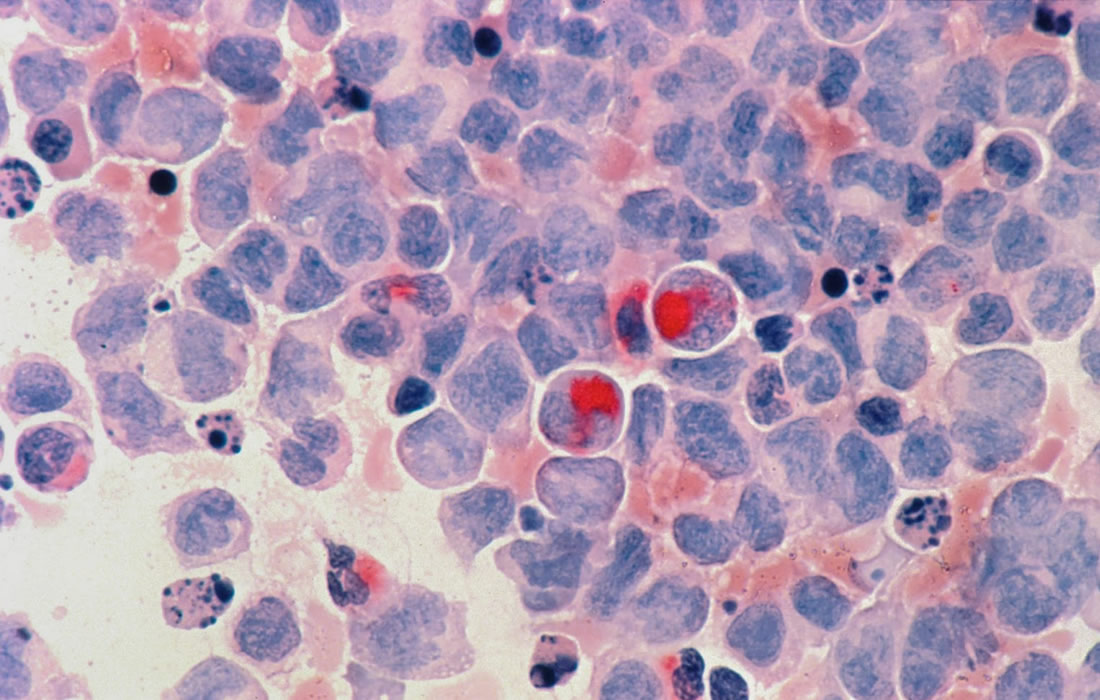Regenerative Medicine News and General Information
New Treatment Target Identified for Radiation-Resistant Cervical Cancer
Two new studies from Washington University School of Medicine in St. Louis have identified a previously unrecognized pathway of cell death — named lysoptosis — and demonstrate how it could lead to new therapies for cervical cancer.
The blood of patients with cervical cancer and other tumor types is dotted with a protein called SERPINB3. According to the new research, when the gene that manufactures SERPINB3 is absent in cervical cancer cells, the tumor cells die more easily when exposed to the stress of radiation. Similarly, microscopic roundworms called C. elegans that are missing the equivalent gene die more easily when exposed to stresses in their environments.
“We wondered if this protein ( SERPINB3) may be doing something to protect against cancer. We thought it was possible that the gene was protecting the cancer cells from stress in the same way the equivalent roundworm gene was protecting C. elegans from stress.” said Stephanie Markovina, MD, PhD, an assistant professor of radiation oncology.
“One day I noticed that the worms that had the equivalent gene knocked out were all dying,” Cliff J. Luke, PhD said. “I realized that instead of putting the roundworms in the normal saline that we used, I accidentally put them in regular water. The normal roundworms were totally fine, but the worms lacking the worm-equivalent of the human SERPINB3 gene all died. The plain water was a source of stress, and we determined that they lacked the gene that protects them from stress-induced cell death. We then wondered if this cell death was conserved in mammals. Similar to C. elegans, we showed that intestinal mouse epithelial cells were more sensitive to stress when missing the mouse equivalent of human SERPINB3.”
In all cases the researchers found that this particular mode of cell death is triggered in a specific compartment of the cell known as the lysosome, an important waste-management center responsible for recycling or disposing of cellular waste. The researchers discovered that these genes that protect against cell death triggered by the lysosome (lysoptosis) and the cell death pathway itself are conserved across species, from roundworms to humans.
“Lysosomes leak a bit all the time, and proteins like SERPINB3 are there to neutralize these enzymes if they get out of the lysosome. When SERPINB3 levels are low or absent, or if the stress is strong enough to cause a big lysosomal leak, the cells die quickly, ravaged by the lysosomal enzymes. The cells appear to explode and spew their contents out into the extracellular space, where it triggers an intense inflammatory response. So, lysoptosis signifies an active, stand-alone cell death process that dramatically destroys the cell. This process is very different from apoptosis, in which the cell quietly implodes and the cell debris is cleaned by neighboring cells.”Said Silverman.
To study the effects of the SERPINB3 gene, Markovina used the gene editing technology CRISPR to delete the gene from cervical cancer cells. The researchers observed that cervical cancer cells implanted into mice were more susceptible to the stress of chemotherapy and radiation when they were missing this protective gene.
The researchers are screening drugs that are either investigational or already approved by the Food and Drug Administration for other diseases to identify compounds that shut down the SERPINB3 gene in cervical cancer cells, so they can be killed — by lysoptosis — more easily with chemotherapy and radiation.
“As soon as we have a candidate drug, we hope to get it into clinical trials as soon as possible,” said Markovina, who treats patients with gynecological cancers at Siteman Cancer Center at Barnes-Jewish Hospital and Washington University School of Medicine.
Sources:
Cliff J. Luke, Stephanie Markovina, Misty Good, Ira E. Wight, Brian J. Thomas, John M. Linneman, Wyatt E. Lanik, Olga Koroleva, Maggie R. Coffman, Mark T. Miedel, Qingqing Gong, Arlise Andress, Marlene Campos Guerrero, Songyan Wang, LiYun Chen, Wandy L. Beatty, Kelsey N. Hausmann, Frances V. White, James A. J. Fitzpatrick, Anthony Orvedahl, Stephen C. Pak, Gary A. Silverman. Lysoptosis is an evolutionarily conserved cell death pathway moderated by intracellular serpins. Communications Biology, 2022; 5 (1) DOI: 10.1038/s42003-021-02953-x
Materials provided by Washington University School of Medicine. Original written by Julia Evangelou Strait. Note: Content may be edited for style and length.
Images from:
Photo by National Cancer Institute
https://unsplash.com/photos/mbL91Lg56zc

